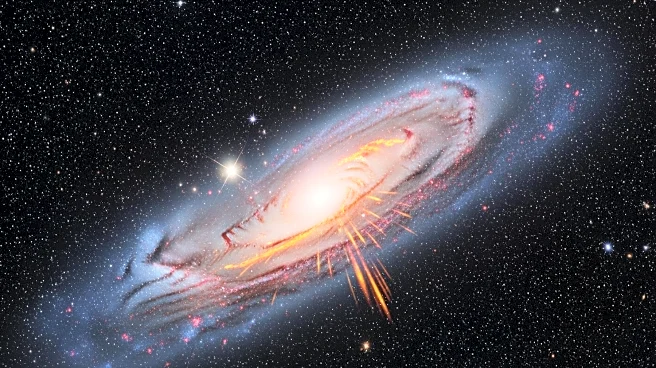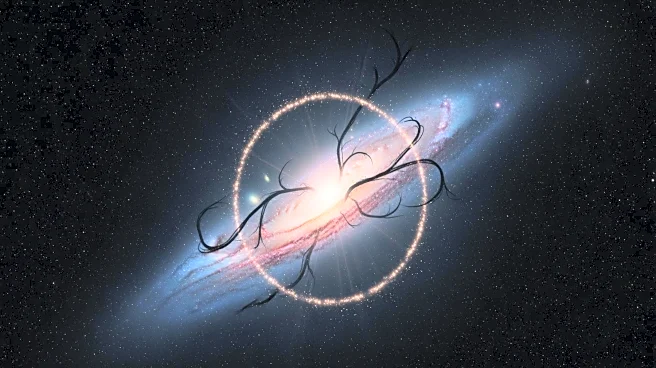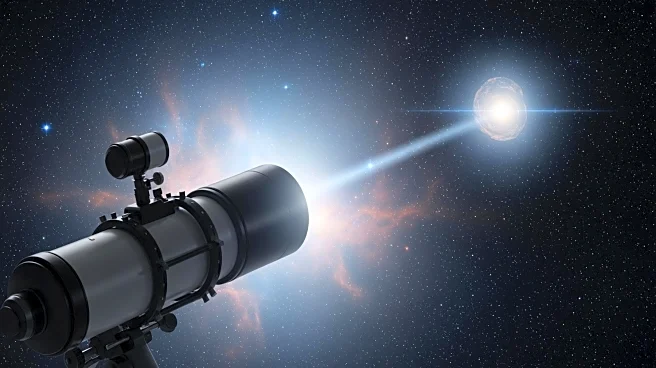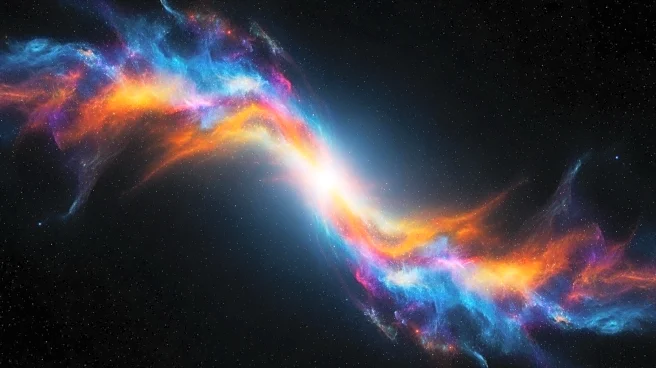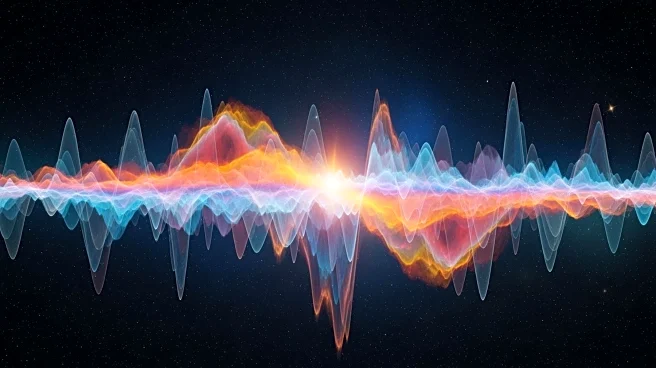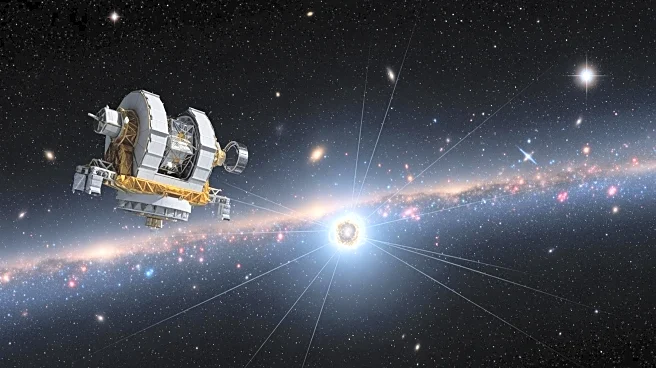What's Happening?
Astronomers are examining a mysterious concentration of gamma rays near the center of the Milky Way, which could potentially be the first proof of dark matter. The Fermi Gamma-ray Space Telescope first detected
these gamma rays in 2009, and researchers have since proposed various explanations, including energetic stars and instrumental errors. A recent study suggests that the gamma ray excess might result from dark matter particle collisions. However, the findings are not conclusive, and further investigations are planned with the upcoming Cherenkov Telescope Array.
Why It's Important?
The study of gamma rays in the Milky Way is significant as it could provide insights into dark matter, which constitutes about 85% of the universe's mass. Understanding dark matter is crucial for comprehending the universe's structure and evolution. If the gamma rays are indeed from dark matter, it would be a groundbreaking discovery, potentially leading to new physics beyond the current understanding. The research could also impact astrophysics by refining models of galaxy formation and evolution.
What's Next?
Researchers plan to continue their investigations with the Cherenkov Telescope Array, a next-generation telescope for gamma ray observations. This could help confirm or refute the dark matter hypothesis. The scientific community is likely to closely monitor these developments, as they could have profound implications for theoretical physics and cosmology.
